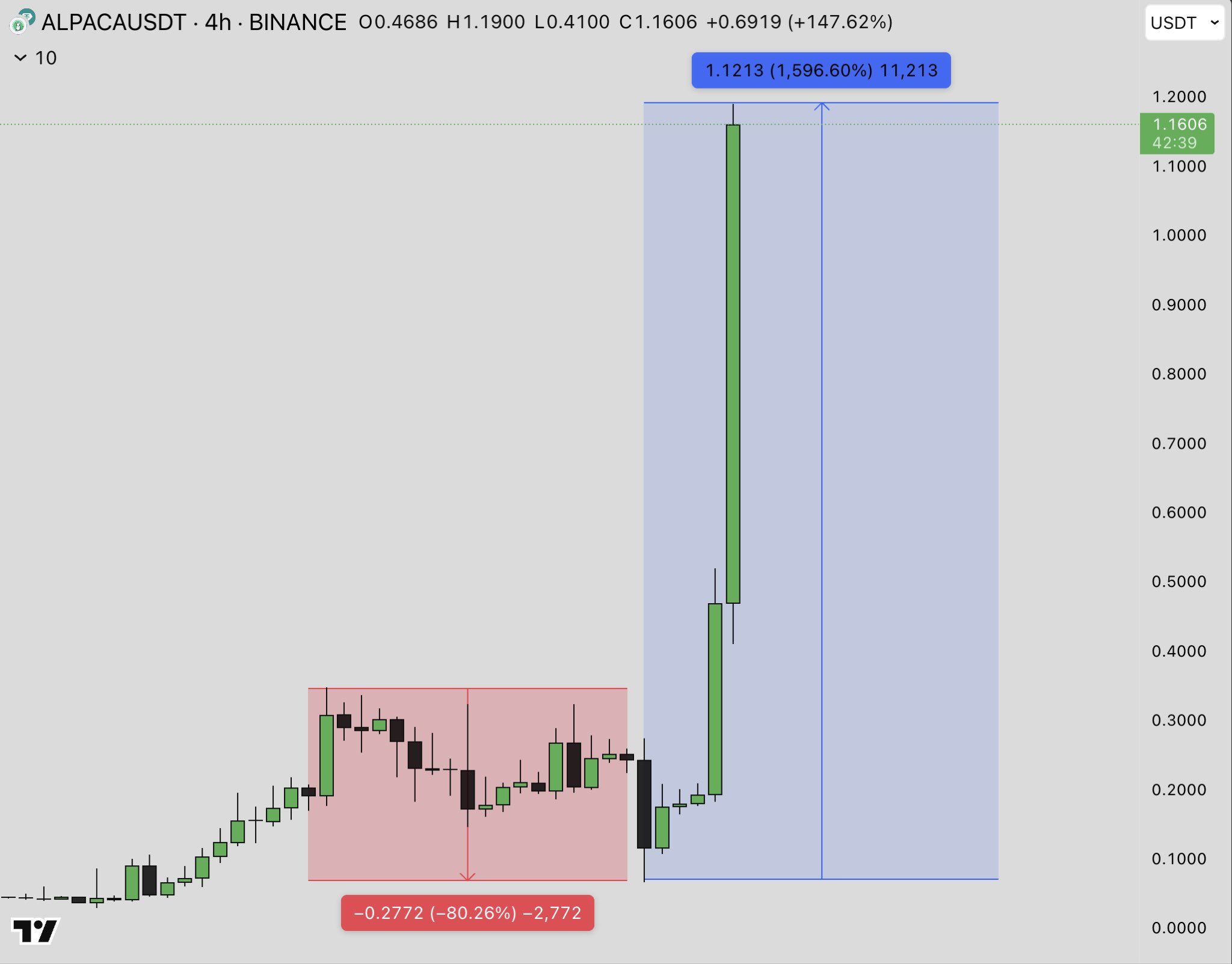Following Binance’s delisting announcement, Alpaca Finance (ALPACA) has experienced a staggering quadruple-digit price rally over the past week.
This counterintuitive market behavior has sparked intense discussion among analysts and traders. Many experts suggest that this could be a case of market manipulation.
Why Did ALPACA’s Price Pump Despite Binance Delisting?
Usually, a Binance listing is a bullish signal for tokens, often driving prices upward due to increased visibility and liquidity. However, recent trends indicate a reversal of this pattern.
On April 24, Binance announced the delisting of four tokens, including ALPACA. While the value of all other tokens declined, ALPACA’s price shot up. BeInCrypto data showed that the token appreciated by over 1,000% over the past seven days.
Nevertheless, the momentum appears to have slowed somewhat as ALPACA nears its delisting on May 2. Over the past day, its value has dipped by 34.5%. At the time of writing, it was trading at $0.55.

Yet, ALPACA’s unusual rise has grabbed the attention of market watchers.
“ALPACA is the worst crypto manipulation I’ve seen in recent times. How do you pump a token from 0.02 to 0.3 then sell it back to 0.07 and pump it from 0.07 to 1.27 then back down to 0.3,” a user wrote.
Analyst Budhil Vyas called it a “textbook liquidity hunting.” He explained that large market players, or whales, initially drove the price down by 80%, triggering panic and liquidations. Then, just before the 2-hour delisting deadline, they rapidly pumped the price by 15X.

Vyas believes this was a strategic move to extract liquidity from the market, as these whales were desperate to secure positions before the asset was removed from the exchange. He further emphasized that no real accumulation was taking place.
The analyst said the price surge was purely tactical. It was designed to drain whatever liquidity was left in the market.
“This is crypto in 2025. Stay alert,” Vyas cautioned.
Meanwhile, Johannes also provided a detailed breakdown of the mechanics behind such price manipulations. In the latest X (formerly Twitter) post, he elaborated that sophisticated parties exploit the low liquidity that follows delisting announcements.
The strategy involves dominating a large portion of the token’s supply. The traders take large positions in perpetual futures, betting on the token’s price rising, as these contracts are more liquid than spot markets.
They then buy the token on the spot market, increasing demand and price. With most of the supply controlled, there is little selling pressure, allowing the price to spike.
Once the delisting occurs, the perpetual futures positions are forced to close with minimal slippage. This enables traders to lock in substantial profits.
DeFi analyst Ignas also weighed in on the situation. According to Ignas, this pattern has been observed before, especially during delisting announcements on the South Korean exchange Upbit.
In fact, he noted that delistings used to receive similar, if not more, attention from speculators as new listings in the country.
“A delisting window requires closing down deposits, so with an inflow of new tokens restricted, degens pump the price to get the last hooray before an inevitable dump,” he wrote.
Ignas referenced Bitcoin Gold (BTG) as an example. The altcoin’s price increased by 112% after Upbit announced its delisting, showing that this price-pumping behavior still occurs.
These cases have sparked debate about whether the “pump → delist” pattern is becoming a new trend. As the crypto market matures, these manipulative practices highlight the urgent need for research, vigilance, and stronger regulatory oversight to protect investors from predatory strategies.
Disclaimer
In adherence to the Trust Project guidelines, BeInCrypto is committed to unbiased, transparent reporting. This news article aims to provide accurate, timely information. However, readers are advised to verify facts independently and consult with a professional before making any decisions based on this content. Please note that our Terms and Conditions, Privacy Policy, and Disclaimers have been updated.


